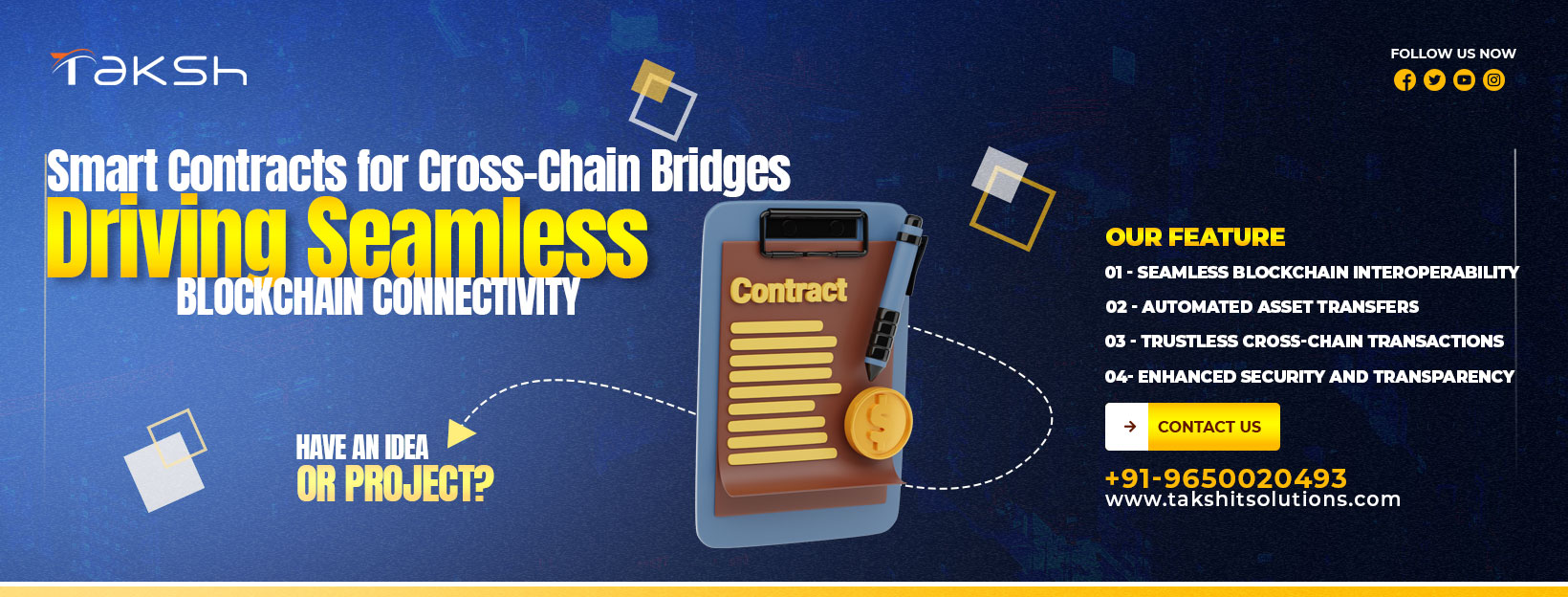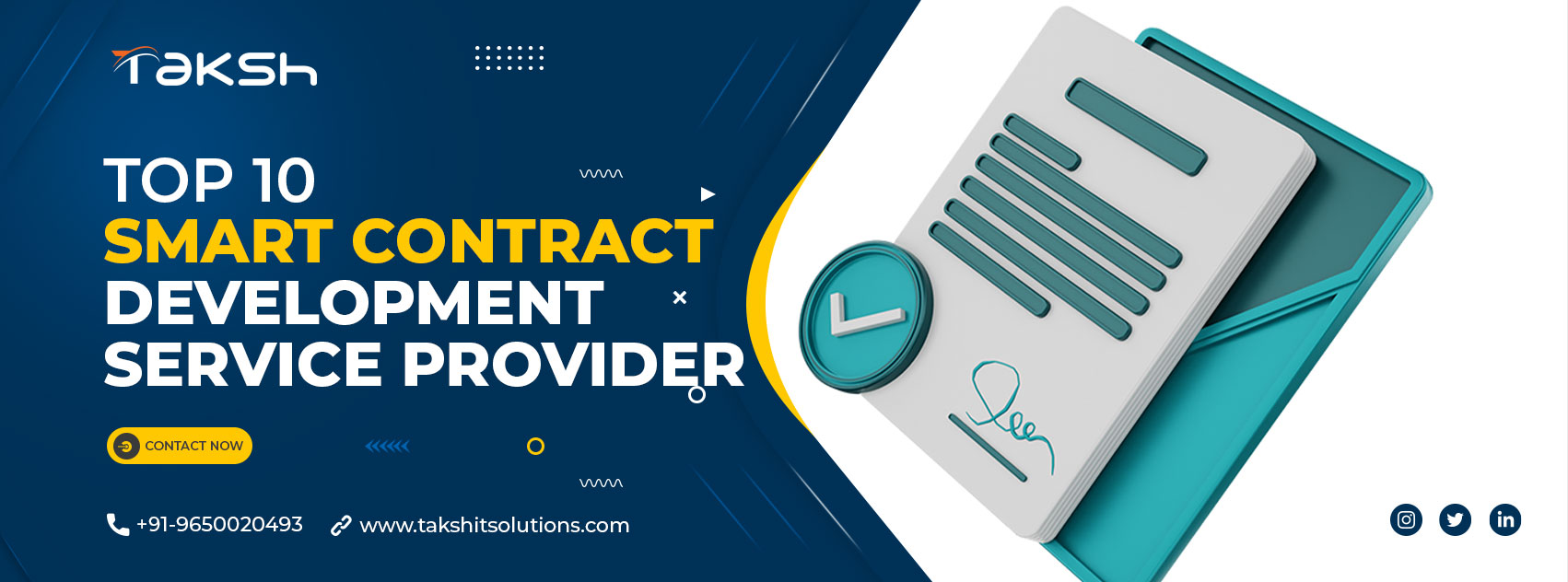
Blockchain technology has revolutionized the way industries operate, offering decentralized, secure, and transparent solutions. However, one of the most significant limitations of this innovative technology is the lack of interoperability between different blockchains. The introduction of smart contracts for cross-chain bridges has emerged as a powerful solution to this problem, allowing seamless interaction between blockchains, facilitating asset transfers, and promoting the growth of decentralized finance (DeFi) ecosystems. In this article, we will explore the role of smart contracts in enabling efficient blockchain interactions through cross-chain bridges and how they are transforming the blockchain landscape.
1. Introduction to Cross-Chain Bridges
Cross-chain bridges are protocols that facilitate communication and interaction between different blockchain networks. These bridges enable the transfer of digital assets, tokens, and data from one blockchain to another, breaking down the silos that exist between various blockchain platforms. Cross-chain bridges are essential for creating an interconnected blockchain ecosystem, where users can leverage the unique features of different blockchains without being restricted to a single network.
2. The Need for Cross-Chain Bridges in Blockchain Technology
As blockchain technology has evolved, numerous blockchain platforms have emerged, each with its unique strengths, consensus mechanisms, and use cases. However, the inability to transfer assets or interact with decentralized applications (dApps) across different chains has created fragmentation in the blockchain space. Cross-chain bridges address this issue by enabling interoperability, allowing users to access services on multiple blockchains, enhancing liquidity, and promoting the broader adoption of blockchain technology.
3. What Are Smart Contracts?
Smart contracts are self-executing contracts with the terms of the agreement written directly into code. These contracts automatically execute predefined actions when specific conditions are met, removing the need for intermediaries and ensuring trustless, transparent transactions. In the context of cross-chain bridges, smart contracts play a pivotal role in facilitating secure and automated asset transfers between blockchains.
4. How Smart Contracts Enable Cross-Chain Bridges
Smart contracts act as the backbone of cross-chain bridges, ensuring that asset transfers and interactions between blockchains occur securely and efficiently. Here’s how they function:
Locking and Minting: When a user wants to transfer assets from one blockchain to another, the assets are first locked in a smart contract on the source blockchain. Simultaneously, an equivalent number of tokens are minted on the destination blockchain.
Burning and Releasing: When the user decides to transfer the assets back to the original blockchain, the minted tokens are burned on the destination chain, and the locked tokens are released on the source chain.
Trustless Operations: Smart contracts ensure that these processes are automated and trustless, meaning that no single party controls the asset transfer, reducing the risk of fraud or errors.
5. The Advantages of Using Smart Contracts in Cross-Chain Bridges
The integration of smart contracts into cross-chain bridges offers several benefits:
Security: Smart contracts are tamper-proof, meaning that once deployed, they cannot be altered, ensuring the integrity of the cross-chain transaction process.
Automation: The use of smart contracts eliminates the need for manual intervention, reducing the likelihood of human error and speeding up transactions.
Transparency: Every action taken by a smart contract is recorded on the blockchain, ensuring full transparency and accountability.
Cost Efficiency: By automating processes, smart contracts reduce the need for intermediaries, lowering transaction costs and making cross-chain interactions more cost-effective.
6. Types of Cross-Chain Bridges
There are several types of cross-chain bridges, each with its approach to facilitating blockchain interactions:
6.1 Trust-Based Bridges
These bridges rely on a trusted third party to facilitate the asset transfer between two blockchains. While they are simple to implement, they require users to trust an intermediary, which may introduce centralization risks.
6.2 Federated Bridges
In federated bridges, a group of pre-selected validators governs the bridge. These validators are responsible for verifying transactions and ensuring the correct transfer of assets between blockchains. While more decentralized than trust-based bridges, federated bridges still involve some level of trust in the validators.
6.3 Trustless Bridges
Trustless bridges leverage smart contracts and cryptographic techniques to facilitate asset transfers between blockchains without relying on intermediaries or validators. These bridges offer the highest level of security and decentralization, as they do not require users to trust any third party.
7. Key Use Cases of Smart Contracts in Cross-Chain Bridges
7.1 Decentralized Finance (DeFi)
Cross-chain bridges powered by smart contracts enable the seamless transfer of assets between different DeFi platforms. This enhances liquidity and allows users to access DeFi services across multiple blockchains, promoting the growth of decentralized financial ecosystems.
7.2 NFT Transfers
Non-Fungible Tokens (NFTs) have gained immense popularity, but transferring NFTs between different blockchain platforms has been a challenge. Cross-chain bridges can facilitate the movement of NFTs from one blockchain to another, allowing creators and collectors to expand their reach and access new markets.
7.3 Gaming and Metaverse
In the gaming and metaverse industries, cross-chain bridges enable the transfer of in-game assets, virtual currencies, and tokens between different blockchain-based gaming platforms. This fosters a more interconnected gaming ecosystem, where users can leverage their assets across multiple platforms.
8. Challenges and Limitations of Cross-Chain Bridges
While cross-chain bridges offer significant benefits, they also come with certain challenges:
Security Risks: Despite the security advantages of smart contracts, cross-chain bridges have been targeted by hackers in the past, leading to significant losses. Ensuring the robustness of smart contracts and bridge infrastructure is essential to mitigating these risks.
Scalability: As the number of blockchain networks continues to grow, scaling cross-chain bridges to support a large number of chains becomes increasingly complex. Addressing scalability issues will be crucial for the widespread adoption of cross-chain bridges.
Latency: Cross-chain transactions can sometimes experience delays due to the time required for verifying and processing transactions across different blockchains. Optimizing transaction speeds is essential for improving user experience.
9. Future of Smart Contracts and Cross-Chain Bridges
The future of cross-chain bridges looks promising, with ongoing innovations aimed at improving the efficiency, security, and scalability of these protocols. As blockchain technology continues to evolve, we can expect to see more advanced cross-chain solutions that facilitate seamless interactions between an increasing number of blockchain networks. Additionally, layer 2 scaling solutions, interoperability protocols, and advancements in multi-chain ecosystems will further enhance the functionality of cross-chain bridges.
10. How Taksh IT Solutions Private Limited Leads the Way
At Taksh IT Solutions Private Limited, we specialize in developing cutting-edge cross-chain bridge solutions that leverage the power of smart contracts to enable efficient blockchain interactions. Our team of experts is dedicated to building secure, scalable, and trustless cross-chain solutions that meet the growing demands of the blockchain industry. Whether you’re looking to integrate cross-chain functionality into your DeFi platform, NFT marketplace, or gaming application, Taksh IT Solutions is your go-to partner for cross-chain bridge development.
Conclusion
In conclusion, smart contracts are the key enablers of cross-chain bridges, offering secure, automated, and transparent solutions for facilitating blockchain interactions. Cross-chain bridges play a critical role in breaking down the barriers between different blockchain networks, promoting interoperability, and enabling the seamless transfer of assets and data. While challenges such as security and scalability remain, the ongoing advancements in smart contract technology and cross-chain infrastructure hold the promise of a more interconnected blockchain ecosystem. Taksh IT Solutions Private Limited is at the forefront of this innovation, providing state-of-the-art cross-chain solutions that empower businesses to thrive in the blockchain space.
Thank you for reading our Smart Contract blog. We look forward to sharing more insights and tips with you in the future!
Feel free to contact us for all types of Smart Contract Software Development Solutions.
Business Email Id: business@takshitsolutions.com
Contact Number: +91 9560602339 / +91 9650020493











